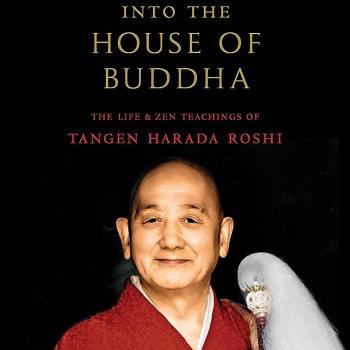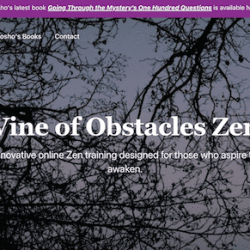A couple points today. First, one important insight that several practitioners have had from contemplating, “To convey the self toward the 10,000 dharmas to do practice/verification is illusion,” is from understanding “to convey” as “to express.”
The issue (rather than somehow to avoid illusion) becomes how to express the self. As a monk? As a social worker? As a lover? As an artist? As a friend?
That’s the macro-picture and then there is the micro-picture – how to express this fleeting dew-drop moment? What form and color from the 10,000 dharma paint pallet can best be conveyed now?
A couple Shobogenzo fascicles take this up and I offer them for you here: “Talking of Mind, Talking of Nature” and “Within a Dream, Expressing a Dream” (the first link takes you to a translation, the second to a little of Taigen Leighton expressing his dream within a dream within his book…because I don’t see a translation online although Kaz Tanahashi has a good one in Enlightenment Unfolds).
The second point is the series of metaphors from the Genjokoan commentary about the relationship between illusion and verification. The mundane and sacred are not only entwined but in a very intimate relationship! The first metaphor is from Xuefeng:
All buddhas in the past, present and future dwell in fire and turn the great dharma wheel.
“Fire” here is this burning, phenomenal, conveying life. Fire is not always dramatic. Sometimes, like the fire-ish leaves above, the fire is subtle and soft.
The second is from Xuansha:
Fire expresses the dharma for the sake of all buddhas in the three times and all buddhas in the three times stand on the ground and listen to it.
Expressive and receptive, conveying and being conveyed are perspectives. One dharma’s conveying is another dharma’s being conveyed. The dharma buddha fish is not only leaping but buddha dharma flopping this way and that.
The third is from Yuanwu:
The powerful flame spreads in the entire sky, the buddha expresses the dharma; the entire sky becomes the powerful flame, the dharma expresses the buddha.
This one is most vigorous. How could it be apart from sitting or lying down?
Questions for comment:
– How do these metaphors impact your perspective on conveying and being conveyed (practice and enlightenment)?
– How does your impacted perspective roll out in sitting, walking, standing, lying down?











